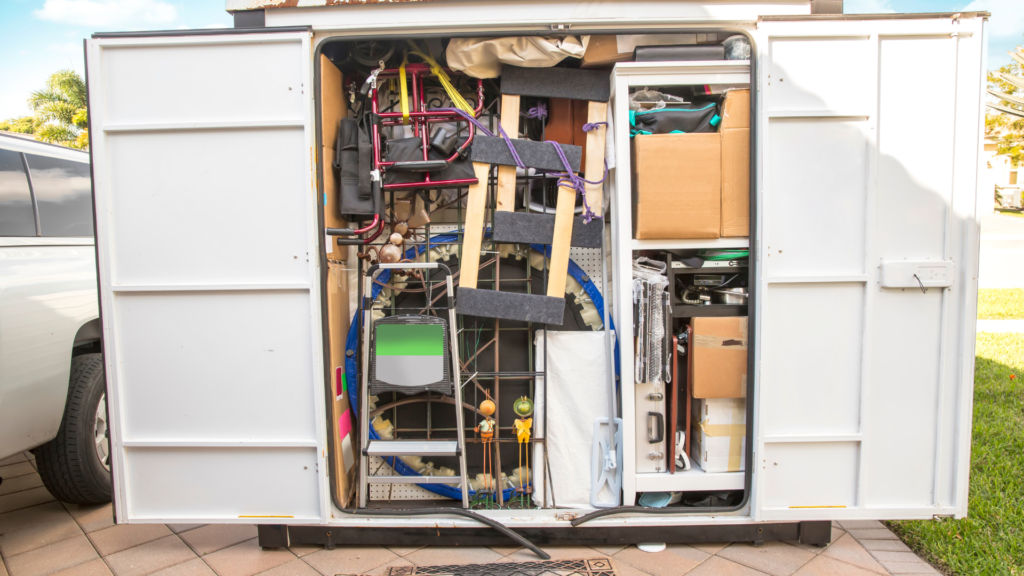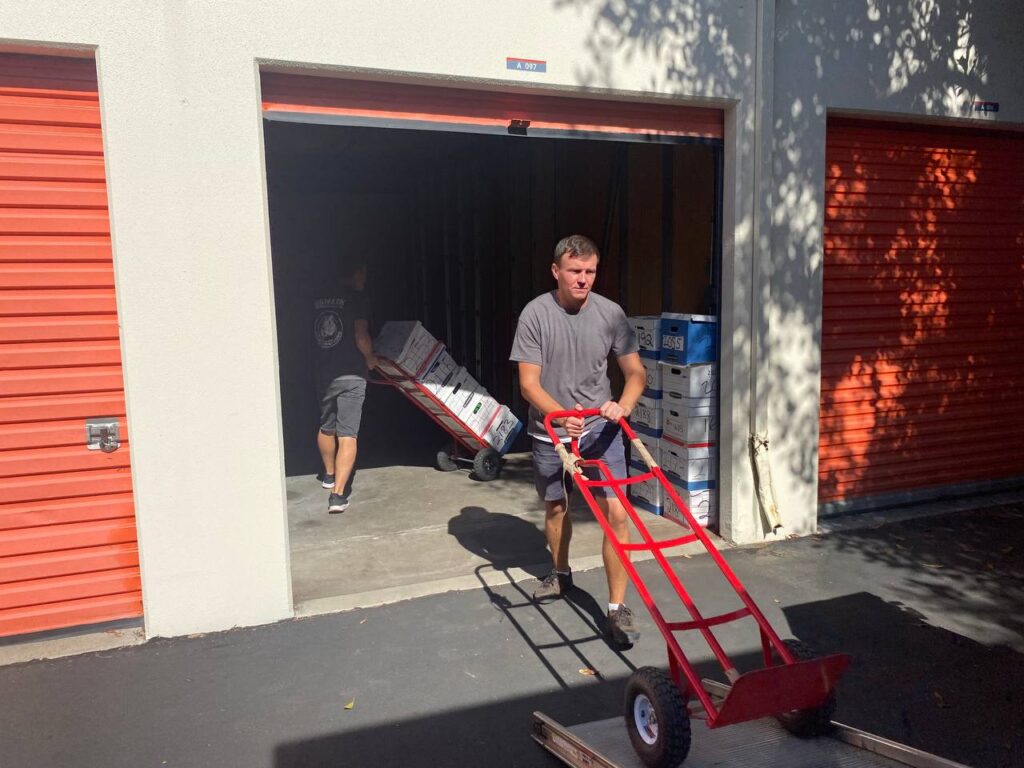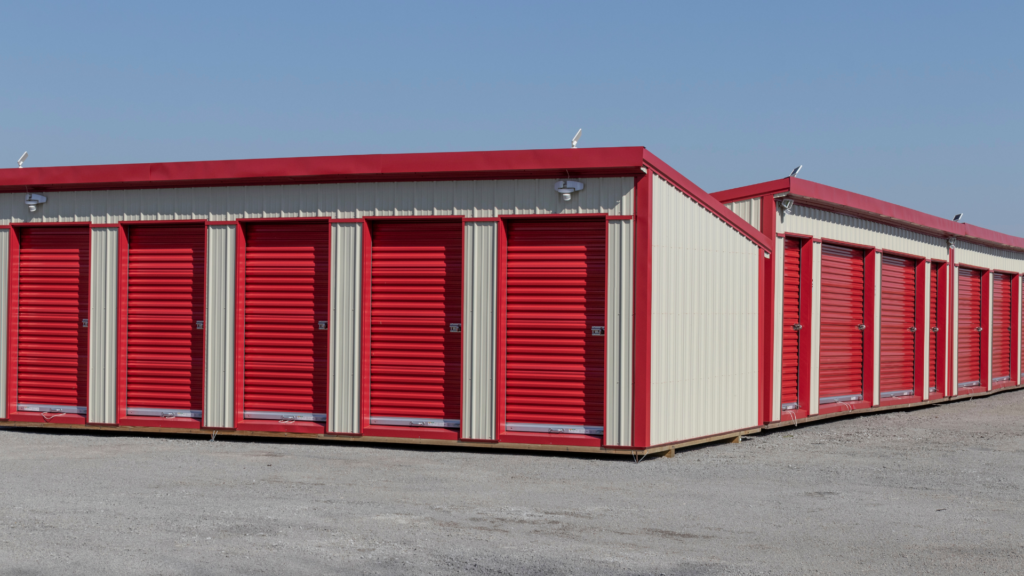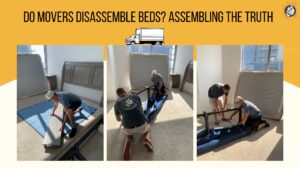Will Movers Go to a Storage Unit?

The Importance of Planning and Preparation in Moving and Storage
Whether you’re downsizing, decluttering, or in between homes, knowing your moving and storage options is crucial. You might be asking, “Will movers go to a storage unit?” We’ve got you covered on that and more.
The short answer is: Yes, movers will go to a storage unit.
Brief Overview of The Three Main Options for Moving and Storage
- Portable Containers: Think of these as your mobile storage unit.
- Full-Service Movers With Storage: Imagine a one-stop shop for all your moving needs, like our services in San Francisco, Los Angeles, Orange County, San Diego, Rancho Cucamonga, and Oakland.
- Self-Storage Units: The DIY route. You pack, you store, you manage.
Moving and Storage Options
Portable Containers:

1. Description and How They Work
Portable containers, often called PODS, are delivered to your location. You load them up, and they’re shipped to your destination or a storage facility.
2. Pros
- Flexibility and Convenience: No need to rush; take your time packing.
- One-time Loading: Load once, unload once. Simple as that.
3. Cons
- Cost Compared to Other Options: Generally pricier than self-storage units.
- Potential Limitations: Size and location could be a hurdle.
Full-Service Movers With Storage:

1. Description and Services Provided
Full-service movers handle everything from packing to storage. Check out services like our San Diego movers for an all-inclusive experience.
2. Pros
- Comprehensive Service: They pack, they move, they store. Triple threat!
- Hourly Help: Benefit from expert hourly help to make your move smooth.
3. Cons
- Higher Cost: Your wallet might feel this one.
- Less Personal Control: You’re not the one calling the shots on packing and loading.
- Schedule Limitations: Some movers, like our Los Angeles moving company, might have busy schedules.
Self-Storage Units:

1. Description and Typical Uses
Self-storage units are spaces you rent to store your belongings. You’re in charge of transporting and storing your items.
2. Pros
- Cost-Effectiveness: Usually cheaper than other options.
- Full Autonomy: You’re the boss of your storage space.
3. Cons
- Inconvenience: Multiple loadings and unloadings are a hassle.
- No Transportation: You’ve got to handle this part yourself.
Cost Considerations
Moving and storage aren’t just about convenience; they’re also about cost. Whether you’re eyeing portable containers, full-service movers, or self-storage units, understanding the cost structure can help you make an informed decision.
Comparing Costs Between Options
Table: A Snapshot of Average Costs
| Moving Option | Average Cost | Additional Costs | Payment Structure |
|---|---|---|---|
| Portable Containers | $$$ | Shipping, Permits | Upfront, Monthly Fees |
| Full-Service Movers | $$$$ | Packing, Hourly Help, Tips | Deposit, Final Payment |
| Self-Storage Units | $$ | None | Monthly Rental |
Portable containers often have upfront costs and monthly fees. Full-service movers like those in San Francisco or Orange County might offer a limited-time offer or promo code, but expect a deposit and final payment. Self-storage units are generally the most straightforward, with a simple monthly fee.
Price Ranges and Factors That Affect Cost
1. Location
The cost can vary significantly based on where you’re moving to or from. A move within the city will be less expensive than an interstate move.
2. Time of Year
Peak moving season can bump up the prices. Learn more about the best time of year to move.
3. Size and Weight of Belongings
More stuff means more space and more space means more money.
4. Additional Services
Need packing or moving help? That’s extra. Specialized services for furniture storage or climate control also add to the cost.
5. Insurance and Liabilities
Some services offer insurance at an additional cost, which could be a wise investment depending on the value of your belongings.
How to Determine the Most Cost-Effective Choice for Your Situation
Checklist: Making the Most of Your Money
- Assess Your Needs: Short-term or long-term? Minimal belongings or a whole house?
- Get Multiple Quotes: Don’t settle for the first offer.
- Read the Fine Print: Any hidden fees or charges?
- Ask About Promos: Any limited time offers or promo codes available?
- Plan Ahead: Last-minute moves are almost always more expensive.
Preparing Your Items for Storage

Getting your items ready for storage isn’t just about tossing them into boxes. Proper preparation can save you headaches later and even extend the life of your stored items.
A. Importance of Cleaning and Disassembling Furniture
Why Clean?
Dust and grime can lead to mold and unpleasant odors. So, make sure to give your furniture a good cleaning before storing it. Want tips on how to do it? Check out how to prepare for movers to pack.
To Disassemble or Not?
Taking apart furniture can save space and make for easier transportation. However, ensure you keep all screws and fittings in a labeled bag so reassembly isn’t a jigsaw puzzle.
B. Wrapping and Packing Tips for Protection
The Art of Wrapping
What do you wrap furniture in for storage? Use moving blankets and shrink wrap for ultimate protection. Learn more about how to use moving blankets for the perfect wrap.
Boxes vs. Bins
Cardboard boxes are cost-effective but susceptible to moisture. Plastic bins offer better protection but can be pricey.
Specialty Items
For delicate or valuable items like electronics or artwork, consider specialty boxes. Not sure how to pack these? Here’s a guide on how to pack electronics for moving.
C. Special Considerations for Storing Specific Items
Clothes:
- Garment Boxes: Ideal for hanging items and dresses.
- Moisture Control: Silica gel packs can help control humidity.
Fragile Items:
- Bubble Wrap: For glass and ceramics.
- Peanuts: For extra cushioning.
Storing Electronics:
- Climate Control: Essential for long-term storage.
- Original Boxes: The best fit and most secure.
Miscellaneous Items:
- Books: Store upright and pack tightly to prevent warping.
- Tools: Clean and oil to prevent rust.
Conclusion
A. Recap of Storage Options and Their Suitability for Different Needs
So, will movers go to a storage unit? The answer depends on the type of service you choose. From PODS to full-service movers, each has its pros and cons.
B. Final Thoughts on the Value of Careful Planning in Moving and Storage
Planning is your best ally. Whether you’re opting for portable containers or a moving company in Orange County, being prepared can save you both time and money.
C. Call to Action: Getting a Quote and Utilizing Resources for a Smooth Move
Ready to make your move? Get a quote from reputable services like our Oakland movers and check out resources like moving tips to make your transition as smooth as possible.
FAQ Will Movers Go to a Storage Unit
Q: Can you ship goods to a storage unit?
A: It depends on the storage facility and the type of storage service you’re using. Some full-service storage solutions offer this service, but you’ll need to confirm with your provider.
Q: How do I move things to storage?
A: You have multiple options:
- DIY: Rent a truck and do it yourself.
- Hourly Help: Services like our San Diego movers offer hourly help for loading and unloading.
- Full-Service Movers: They’ll handle everything from packing to storage.
Q: How do you pack a storage unit for moving?
A: Efficient packing is key. Use sturdy boxes, categorize items, and make sure to use vertical space. For more tips, check out how to pack for a move.
Q: Where should I store my stuff before moving in?
A: This depends on your needs and budget:
- Portable Containers: Keep your items in a container and have it delivered when you’re ready.
- Self-Storage Units: Good for long-term storage but requires transport.
- Full-Service Movers: They can offer storage solutions, especially if you’re using our services in locations like Qshark Movers San Francisco or Orange County.
Q: What is the most efficient way to pack a storage unit?
A: Maximize space by disassembling furniture, stacking boxes by weight, and using storage aids like shelves. For how-tos, check our guide on how to use moving straps.
Q: What do you wrap furniture in for storage?
A: Moving blankets and shrink wrap are your best friends for furniture storage. Curious about the details? Learn how to use moving blankets.


 Do Movers Disassemble and Reassemble Furniture?
Do Movers Disassemble and Reassemble Furniture? Do Movers Charge for Travel Time? Everything You Need To Know!
Do Movers Charge for Travel Time? Everything You Need To Know! Do Movers Move in the Rain? Weathering the Storm of Your Big Move
Do Movers Move in the Rain? Weathering the Storm of Your Big Move Do Movers Disassemble Beds? Assembling the Truth
Do Movers Disassemble Beds? Assembling the Truth